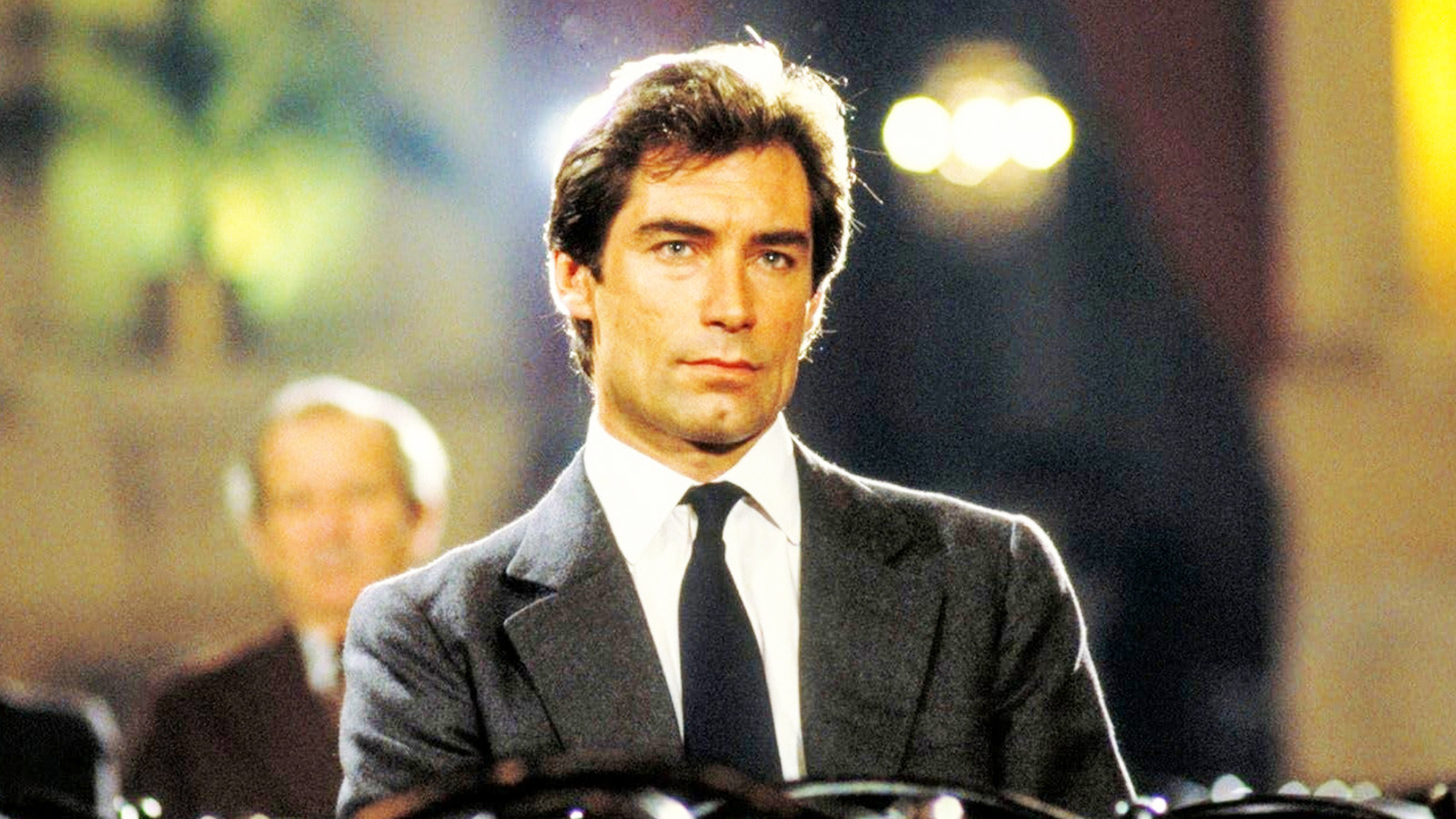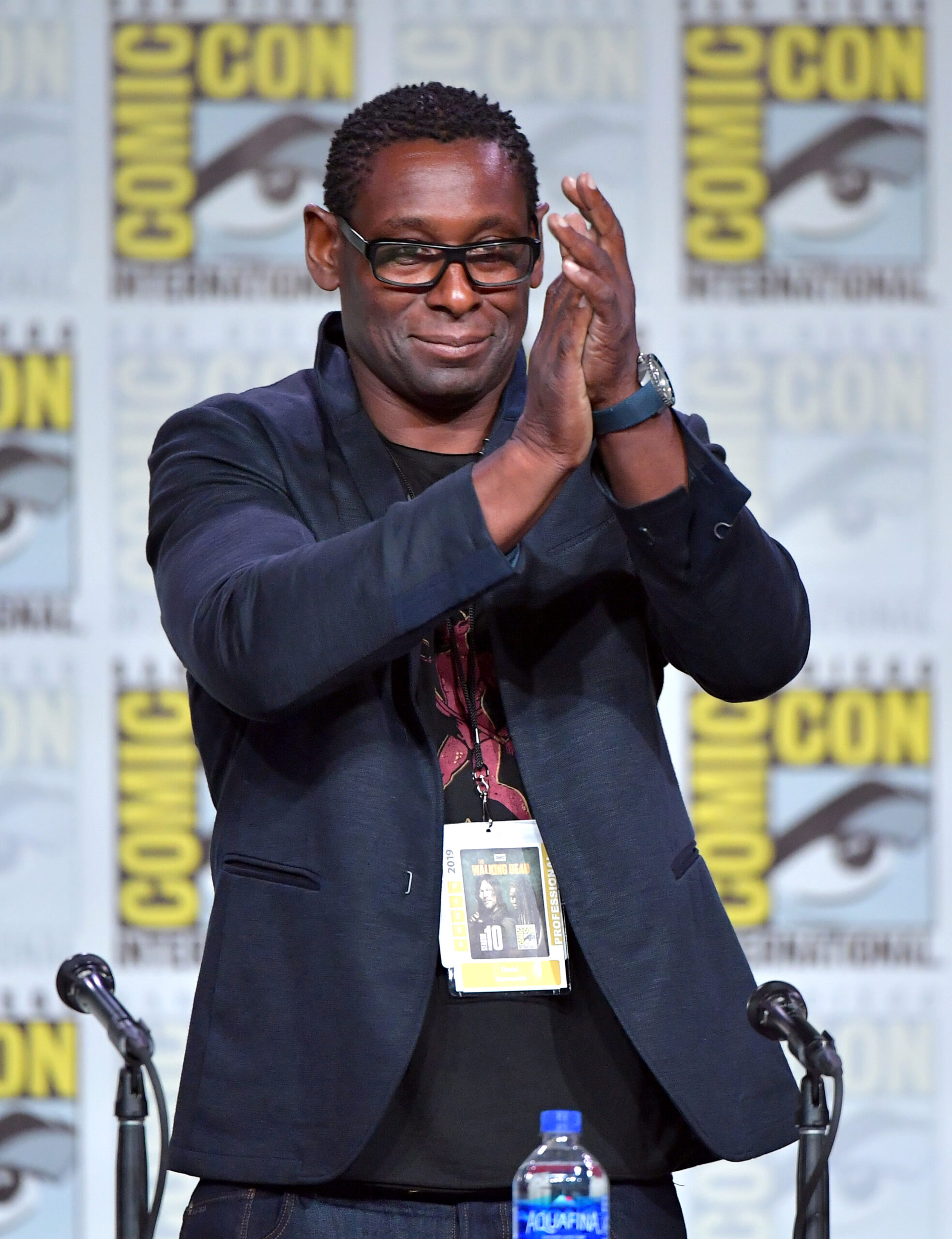
Timothy Dalton
Birthdate – March 21, 1946 (78 Years Old)
Birthplace – Colwyn Bay, Wales, UK
At a consistently lean 6′ 2″, green-eyed Timothy Dalton may very well be one of the last of the dying breed of swashbuckling, classically trained Shakespearean actors who have forged simultaneous successful careers in theater, television and film. He has been comparison-shopped roundly for stepping into roles played by other actors, first following Sir Laurence Olivier in Wuthering Heights (1970), in Scarlett (1994).Undaunted and good-natured, he has always stated that he likes the risk of challenges. He was born in Colwyn Bay, North Wales, the oldest of five children of Dorothy (Scholes) and Peter Dalton-Leggett. His father was stationed in Colwyn Bay during World War II, and moved the family to Manchester in the late 1940s, where he worked in advertising and raised the growing Dalton family, in an upper-class neighbourhood outside of Belper, Derbyshire. Timothy was enrolled in a school for bright children, where he excelled in sports and was interested in the sciences. He was fascinated with acting from a young age, perhaps due to the fact that both his grandfathers were vaudevillians, but it was when he saw a performance of “Macbeth” at age 16 that his destiny was clinched.After leaving Herbert Strutt Grammar School at age 16, he toured as a leading member of Michael Croft’s National Youth Theater. Between 1964-66, he studied at the Royal Academy of Dramatic Art (RADA). Just before completing his two years, he quit and joined the Birmingham Repertory Theatre, playing the lead in many productions under the direction of Peter Dews while at the same time then as James Bond in The Living Daylights (1987) and Licence to Kill (1989), and even more brutally, recently, as Rhett Butler turning professional. Dalton later said of RADA in an interview with “Seventeen” magazine (December 1970), “It took a year to undo the psychological damage that was caused by the oppressive teachers.”.His talent and classic good looks immediately landed him professional work in television, guest-starring on an episode of the short-lived series, Judge Dee (1969), and as a regular on the 14-episode series Sat’day While Sunday (1967) with the young Malcolm McDowell. In late 1967, Peter O’Toole recommended him for the role of the young King Philip of France in The Lion in Winter (1968) (coincidentally, this was also Anthony Hopkins’ big break). The following year, he starred in the Italian film Giuochi particolari (1970) with Marcello Mastroianni and Virna Lisi, although his voice was dubbed into Italian by another actor. Dalton also mixed in a healthy dose of BBC work during this time, including The Three Princes (1968), BBC Play of the Month: Five Finger Exercise (1970) and Candida (1973). Also during this time, he was approached and tested for the role of James Bond in On Her Majesty’s Secret Service (1969) which he turned down, feeling he was too young for the role. His next film was another costume drama, Cromwell (1970), working with director Ken Hughes, with whom he later made his first American film, Sextette (1977). He followed Cromwell (1970) with Wuthering Heights (1970) and Mary, Queen of Scots (1971).He was already developing a pattern in his films that would follow him throughout his career: costume dramas where he played royalty, which he had done in three of his first four films (and ridden horses in three, and raised a sword in two). In 1972, he was contracted to play a role in Lady Caroline Lamb (1972). However, he was replaced at the last moment. Dalton sued the company and won, but the film went on without him. From the early to mid-1970s, he decided to further hone his skills by going back into the theater full time. He signed on with the Royal Shakespeare Company (RSC) and the Prospect Theatre Company (PTC), and toured the world with both, playing the leads in “Romeo and Juliet”, “King Lear”, “Henry V”, “Love’s Labours Lost” and “Henry IV” – parts 1 and 2.In 1975, he returned to movies in the British/Austrian production of The Executioner (1975). It was followed in 1976 by the Spanish religious historical film about the inquisition, El hombre que supo amar (1976), which was never widely released. After this, he took another break from film, mixing in a healthy dose of theater, returning for his first American film, Sextette (1977), and the lengthy miniseries Centennial (1978), his first American television appearance, in which Lynn Redgrave played his wife. Because of his broad exposure to American audiences in this series, he began to get more frequent film and television work in the United States, including the Charlie’s Angels (1976) episode “Fallen Angel” — which, ironically, had several references to his character being like James Bond — and the TV movie The Flame Is Love (1979). Although he did a few features, including playing Vanessa Redgrave’s husband in Agatha (1979), most of his work until 1985 consisted of TV movies and miniseries. He played Prince Barin in the science fiction classic Flash Gordon (1980). He followed this with a small film, Chanel Solitaire (1981) and also filmed a staged production of Antony and Cleopatra (1984) opposite Lynn Redgrave, with Anthony Geary, as well as Nichelle Nichols and Walter Koenig of the original Star Trek (1966) series.The years 1983-1987 have so far been the most prolific of his career. In 1983, he starred as Rochester in what he considers one of his best works, the popular BBC miniseries Jane Eyre (1983). Also, during this time, Roger Moore was considering leaving Bond, and Dalton was again approached, but due to his full schedule, he had to decline. In 1984, he did one of his many narrations in the Faerie Tale Theatre (1982) production of The Emperor’s New Clothes (1987). That same year also saw him in the Hallmark Hall of Fame piece The Master of Ballantrae (1984) opposite Michael York and Richard Thomas, and another miniseries, Mistral’s Daughter (1984), opposite Stefanie Powers and Stacy Keach. The next year was also a very busy one. He starred in another miniseries, Sins (1986), playing the brother of Joan Collins, and also starred in and narrated the four-hour miniseries Florence Nightingale (1985), opposite Jaclyn Smith. He also starred in The Doctor and the Devils (1985) as Dr. Thomas Rock, with Stephen Rea, Jonathan Pryce and Patrick Stewart.In the mid-to-late 1980s, Dalton narrated many nature documentaries, most notably several episodes of the UK series Wildlife Chronicles (1987). In the spring of 1986, he teamed with Vanessa Redgrave for another revival of a Shakespeare production, The Taming of the Shrew (1988) and his interpretation of Petrucchio received uniformly high praise. Simultaneously, the world was playing a guessing game as to who would succeed Roger Moore as James Bond. Dalton was approached but was committed to the theater, and so Pierce Brosnan was offered the role. When Brosnan was unable to get out of his Remington Steele (1982) contract at the last minute, Dalton was again approached. Able now to work it into his tight schedule, he agreed. Although his first outing as Bond, The Living Daylights (1987), did reasonably well at the box-office, Licence to Kill (1989) suffered from a lack of marketing that appeared to harm its chances of big box-office success. However, Dalton’s interpretation of “Bond” in this film received critical acclaim in some quarters as being the closest to author Ian Fleming’s literary “Bond”. Back in the theater, he teamed again with Vanessa Redgrave for a revival of Eugene O’Neill’s seldom performed play, “A Touch of the Poet”, which is considered by some to be his and Redgrave’s finest professional collaboration. Although there were talks of bringing the play to Broadway, this never materialized.Following Licence to Kill (1989), he immediately returned to one of his strengths, costume drama, in The King’s Whore (1990). It was followed by his excellent performance in the Disney action adventure The Rocketeer (1991), where he played an Errol Flynn type Nazi agent. In August 1991, he teamed with Whoopi Goldberg for the first biracial interpretation of “Love Letters” for the final sold-out performances of the play in Los Angeles. When he had signed on to do Bond, it was for three pictures, but the rights to the Bond films became entangled in lengthy litigation, delaying production of the third. During this wait, he was set to star in the title role of another historical epic, Christopher Columbus: The Discovery (1992). However, the film was doomed from the start due to the competition with the Gérard Depardieu “Columbus” picture, which was racked with its own problems. When the director was replaced, Dalton backed out and was followed by his co-star, Isabella Rossellini.In 1992, he starred in the A&E production Framed (1992), which won a bronze medal in the 1993 New York Film Festival. The next year, he journeyed to northern Alaska and Minnesota to make a documentary on one of his favorite subjects, wolves. In the Company of Whales (1991) went on to win a silver medal in the 1994 New York Film Festival. He kept busy in television through 1993 and 1994. He made Red Eagle (1994), Scarlett (1994) and managed to squeeze in a guest appearance on Tales from the Crypt (1989) in the episode “Werewolf Concerto”. In 1994, he took on the role of Rhett Butler in the eight-hour miniseries Scarlett (1994), produced by Robert Halmi Sr. for the Hallmark Hall of Fame. In April of that year, believing he needed to move on to fresh challenges, he officially resigned the role of James Bond, a move which was much regretted by the producers, though they understood his reasons. After two months of negotiations, the role went to Pierce Brosnan.In September 1994, Dalton was called upon for two readings of “Peter and the Wolf” at the Hollywood Bowl. He played to full-capacity crowds. In November, Scarlett (1994) premiered and, though given only a lukewarm response by critics, it was a ratings success not only in the United States but all over the world, breaking records in many European countries. As always after a major work, Dalton again withdrew quietly and without fanfare to search for his next project, a small, personal film. In the summer of 1995, he journeyed to Canada to shoot Salt Water Moose (1996). The film was made by Canada’s Norstar Entertainment and was sold to Halmi to be the first video release in his new line of Hallmark family films. It premiered on Showtime in June 1996.During the spring of 1996, he made the IRA drama The Informant (1997) in Ireland and, in May, he traveled to Prague to shoot Passion’s Way (1999), opposite Sela Ward. On February 7, 1997, the comedy The Beautician and the Beast (1997) co-starring Fran Drescher opened in the United States. He also gleefully parodied his swashbuckling/James Bond image in Looney Tunes: Back in Action (2003) as a spy playing an actor playing a spy.In 1995, Dalton began a relationship with Oksana Grigorieva which produced a child in 1997, Dalton’s son Alexander. Over the following years, Dalton has been a caring and loving father of his son. Very much a private man, Dalton’s pastimes include fishing, reading, jazz, opera, antique fairs and auctions and, of course, movies.






